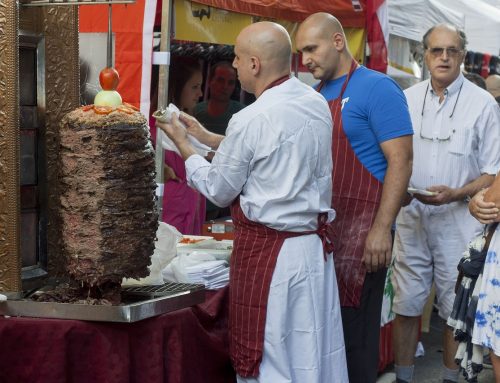Korean cuisine started gaining popularity in the United States around 2014. The concept has enjoyed a near meteoric rise since then. In fact, Korean restaurants are bringing in a reported $6.1 billion in the United States alone.
I suppose the secret is out among hungry consumers. Signs of Korean culinary conquest can be seen almost everywhere with bulgogi, umami, and bao becoming common staples in the foodie’s lexicon too.
Consisting of a variety of unusual dishes, including BBQ, kimchi, and many more, Korean cuisine has reached a popularity in the US that exceeded expectations with 37% of Americans reporting they enjoy cuisine. So if you’re planning on opening your own Korean restaurant and capitalizing on the momentum, here are some of the best names still available for use.
Korean Restaurant Name Ideas
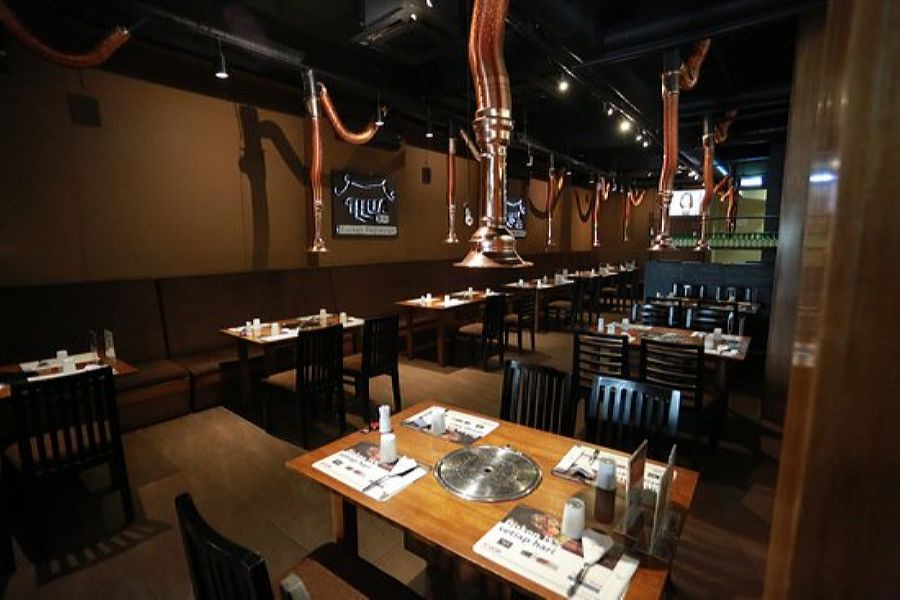
A typical Korean restaurant interior.
The rise of Korean popularity in the United States has given rise to a number of Korean restaurants. Many of these eateries serve traditional Korean cuisines, including the famous cabbage and daikon kimchi. If you’re trying to figure out what to call your Korean restaurant, we’ve compiled our best suggestions below.
Related Reading: How I Started a Restaurant with No Money and a 540 Credit Score
- Ahn Ssi Makgeolli
- Another Korean Restaurant
- Bada Sikdang
- Bibimbap
- Budaejjigae
- Bulgogi Grill
- Bulgogiui Gohyang
- Cheong Jin Ok
- Danji leseutolang
- Doejigogi Galbi
- Doenjang Jjigae
- Doore Yoo
- Eulji Myun Oak
- Gamjatang House
- Gaonnuri
- GuiGui 구이구이
- Gwangjang Market
- Haemul Pajeon
- Hongdae Galbi
- House of Gim
- Innocence 뿅가는
- Jung Sik Dang
- Jungsyukyop
- K-asado
- K-Food 음식
- Kimchijjigae
- Kongguksu
- Kongguksu Jib
- Korasado
- LaSônjae
- Makkoli Jib
- Mandu 4U
- Mokmeoksanbang
- Myeongdong Kyoja
- Nakwon Hoban
- Oh Tongyeong
- Soondubu
- The Korean Pot
- The Manchuriam
- The Mandu Shop
- Tteokbokki
- Ticket to Korea
- The King of Korea
- Fast Serve Korean
- Yum Yum South Korea
Korean BBQ Restaurant Name Ideas
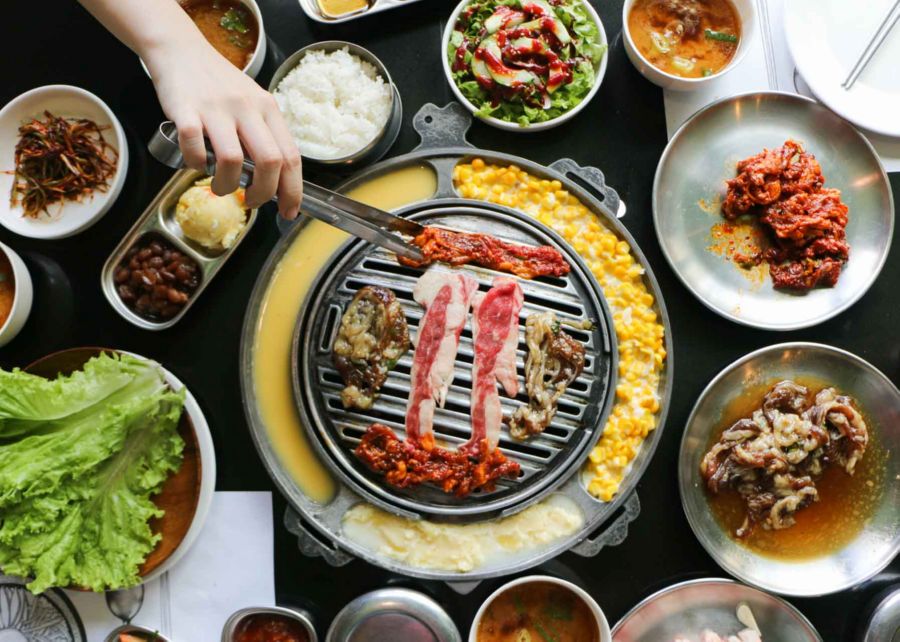
A traditional Korean BBQ restaurant with the grill on the table.
As the newcomer to Barbecue cuisines in America, Korean BBQ is taking the country by storm with its unique style of cooking at the table yourself. Known as “gogi-gu-I” or “meat roast”, there are plenty of names you can adopt for this style of cooking.
- Bornga Korean Barbecue
- Bosintangjip
- Bulgogijip
- Bunsikjip
- Byeokje Galbi
- Dong Won Korean Garden
- Gaja Korean Kitchen
- Galbi Quest
- Hadongkwan
- Hangawi Jib
- Haseyo BBQ
- Heart and Seoul BBQ
- Hotteok Jib
- Jangjorim BBQ
- Jinju Hoegwan
- Jjajangmyeon
- King Sejong’s Original BBQ
- KTown BBQ
- Min-Sok Korean BBQ
- Mrs. Kim’s Ram-Don
- Odaegam BBQ
- Patbingsu Soju
- RJ’s Korean Bowl-Gogi
- Sanchon BBQ Haus
- Seoul Food
- Seoul Station Korean Barbeque
- Seoul Train BBQ
- Si Wha Dam
- Song Jook Heon
- The BBQ 뿅가는 바베큐
- We Got Seoul
- Weeaboo BBQ
- Wooraeok
- Yeji Sikdang
- Yong Su San
- Yukgaejang
- California Korean BBQ
- Korean BBQ Co.
- Seoul BBQ Company
- Fresh from Seoul
Samgyeopsal Restaurant Name Ideas
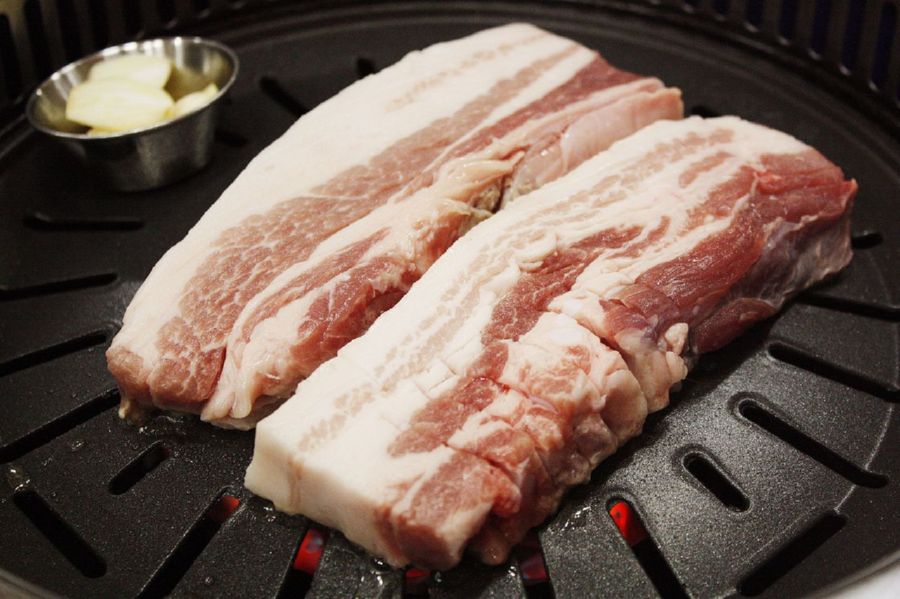
Samgyeopsal or “fatty pork belly” is a popular style of Korean cooking.
Samgyeopsal is a type of Korean cuisine that focuses on the grilling of strips of fatty pork on a Korean table-top grill. The word itself means “pork belly.” Here are some creative ways to name your own Korean Samgyeopsal restaurant.
- Balwoo Gongyang
- Bibim Naengmyeon
- BibimHaru Ssam
- Choigozip Hongdae
- Congdu Samgyup
- Hongleepark Ssamgyap
- Imun Seolnongtang
- Jangseng Geongangwon
- Jihwajajjip Ssam
- Jin Joo Grill
- Jin Wonjo Dakhanmari
- Jinju Jip Ssam
- Jjapaguri leseutolang
- Kiwa Korean Grill
- Kko-Kko’s
- Koraebul Samgyeopsal
- Kuro Ssambap Shikdang
- Kyochon Hongdae
- Mandujip Ssamgyup
- Momofuku Ssam Bar
- Mugyodong Bugeokukjib
- Naengmyeonjip
- Pyeongando Jokbaljip
- Pyeongyang Myeonok
- Pyongyang Myeonok
- Saengson Hoejip
- Samcheonggak
- Samgyeopsal Jib
- Samgyetangjip
- Sariwon Samgyeopsal
- Seolleongtang
- Shabunoki Grill
- Tosokchon Samgyetang
- Tteokguk leseutolang
- Ye Dang Ssamgyup
List of Popular Korean Restaurants
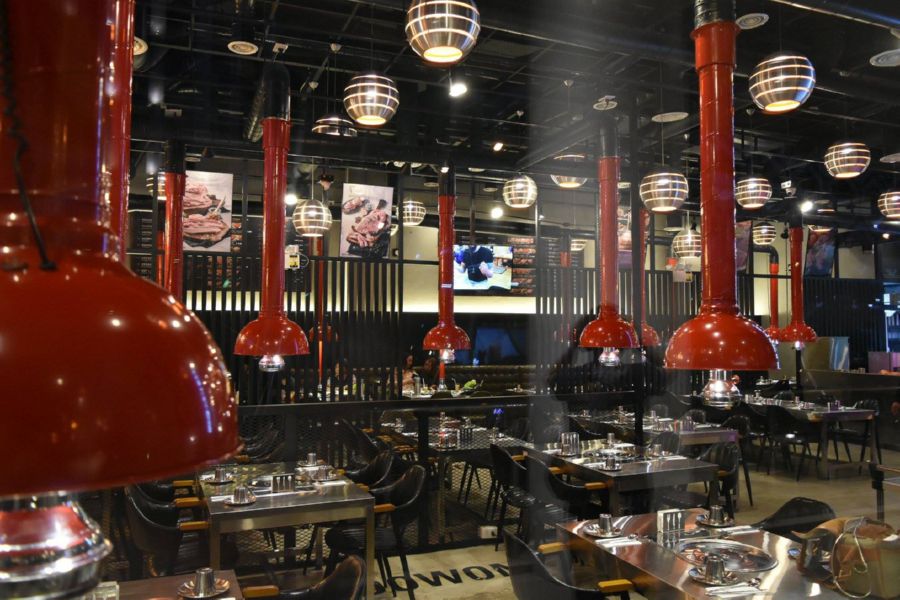
Korean restaurants are becoming popular across the United States.
With the increase in Korean cuisine in the United States there are somewhere around 5,000+ Korean restaurants operating across the country and 33,000 around the world. To give you a sense of the type of restaurant names that work well in the United States, here are restaurant names that have already been claimed.
- Angry Tofu Korean Cuisine
- Blossom Tree
- Bop & Gogi Korean Kitchen and Grill
- Brother’s Restaurant
- Buil Samgye Tang
- Cafe Korea
- Chungkiwa Restaurant
- Coreanos Allston
- Crisp
- Gabose Pocha
- Gabose Pocha
- Gaja Korean Bar
- Genwa
- Girin Korean Ssam Bar
- Han Bat Shul Lung Tang
- Han Oak
- Her Name is Han
- Hobak Korean BBQ
- Honey Pig
- Joule
- Jungsik
- Kalbi Asian Bistro
- KJ Sushi & Korean BBQ
- Koreatown
- Little Korea BBQ
- Makani
- MilkWood
- Mr. Wok
- O Cafe
- Oiji
- Parachute
- Sam Oh Jung
- Seoul Grill
- Shinsegae
- Top Bop
- Triple B Fresh
- Willow Tree Restaurant
What type of cuisine is Korean?
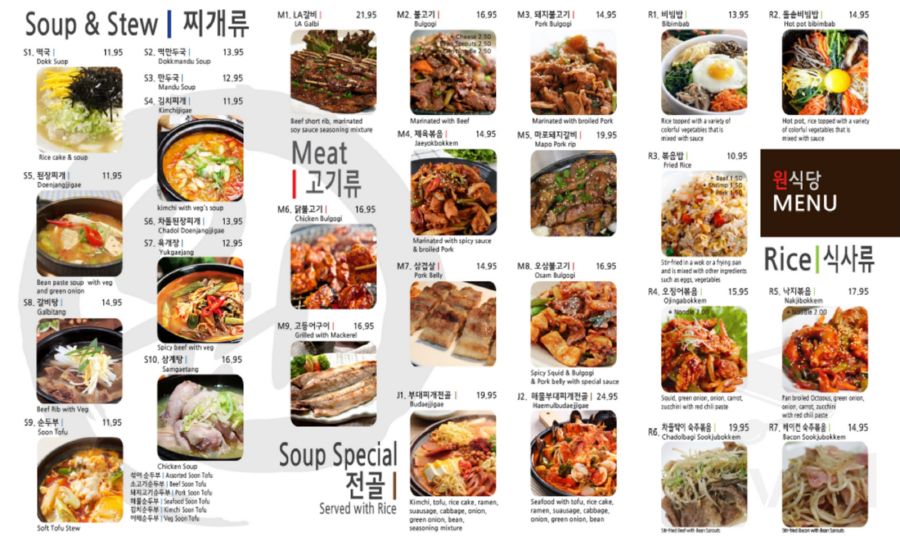
Some of the typical Korean dishes you can find in most restaurants.
Predominantly from South Korea, Korean cuisine as it is known around the world is a cuisine that is largely based on rice, vegetables, and meats in a variety of styles. Evolved through centuries of social and political changes, Korean cuisine originates from the ancient nomadic traditions of Korea and Manchuria.
Related Reading: 200+ Fancy French Restaurants That Aren’t Taken Yet
Traditional Korean cuisine is usually named for the large number of side dishes that accompany the bowls of steamed rice with the famous kimchi served at every meal. Using such common ingredients as sesame oil, fermented bean paste (doenjang), soy sauce, salt, garlic, copious amounts of ginger and gochugaru (pepper flakes), fermented red chili paste known as gochujang, and plenty of napa cabbage, Korean cuisine is spicy and flavorsome with many of the dishes being served cold.
Meat is a prominent ingredient in authentic Korean cuisine, which can also be seen in the western restaurants. Pork has been one of the main protein for centuries in Korea giving rise to the Samgyeopsal style of cooking we know today. Chicken is another common protein in Korean food. Beef is also highly consumed in Korean cuisine though eaten with less frequency than pork or chicken.
Sauces are an important flavor foundation of almost all Korean dishes and are used to season the food in much the same way as Western marinades.
If you’re serious about starting a Korean joint, don’t forget to enroll in our free food business startup kit. We share interviews with successful restaurant owners and tools with everyone that enrolls for free.




